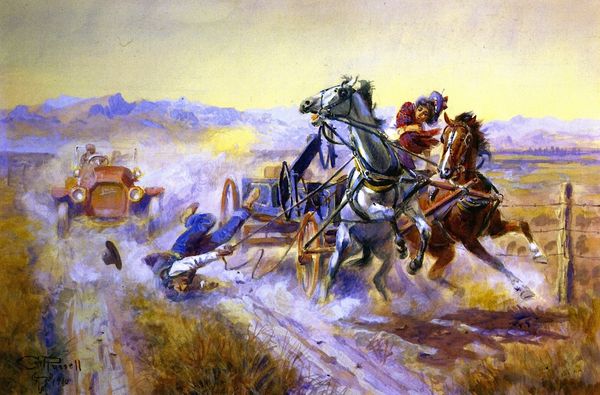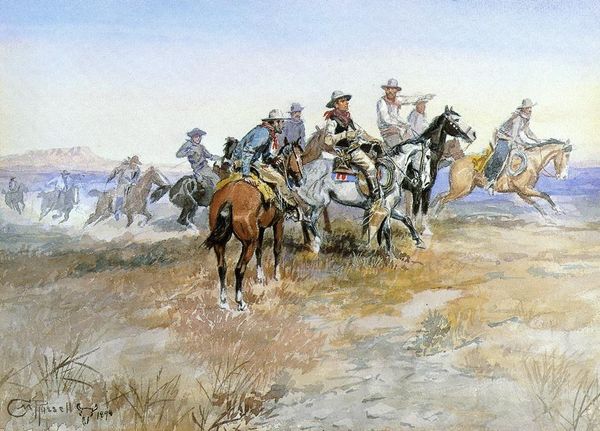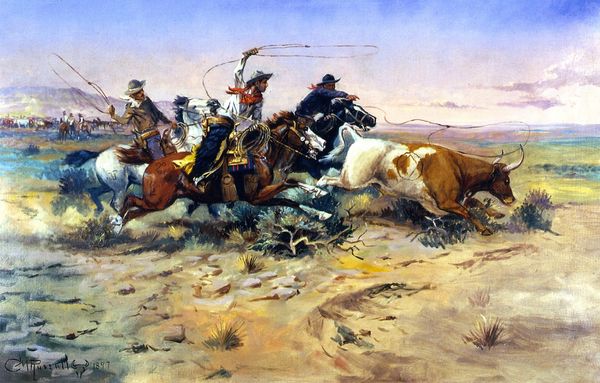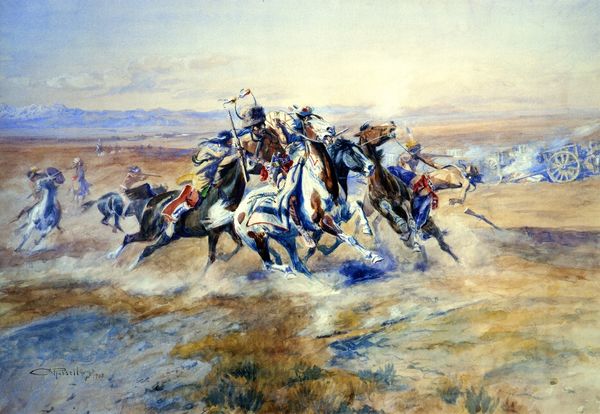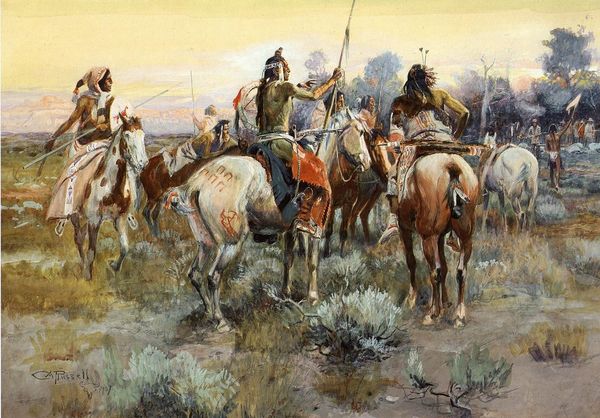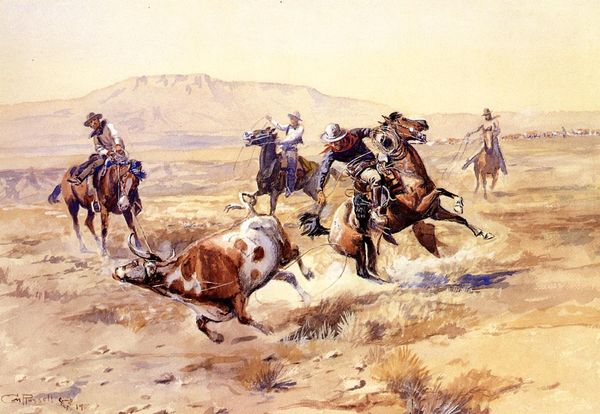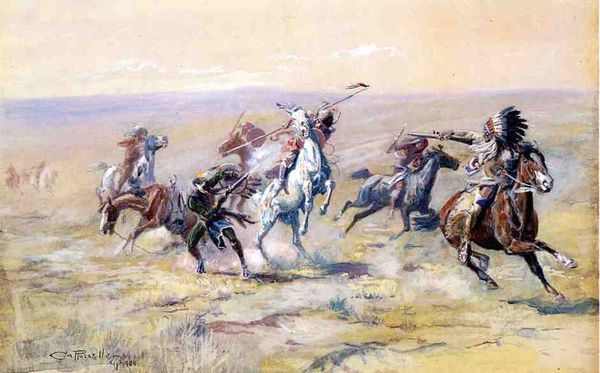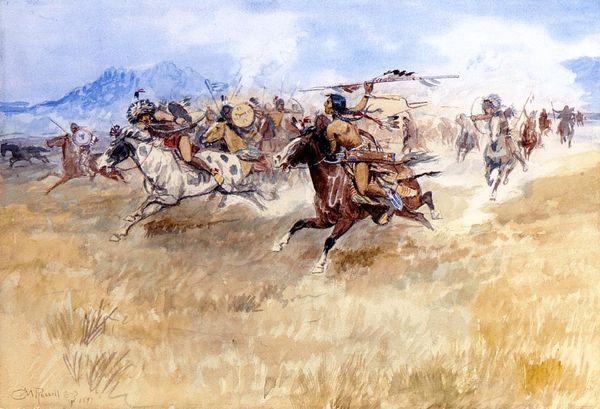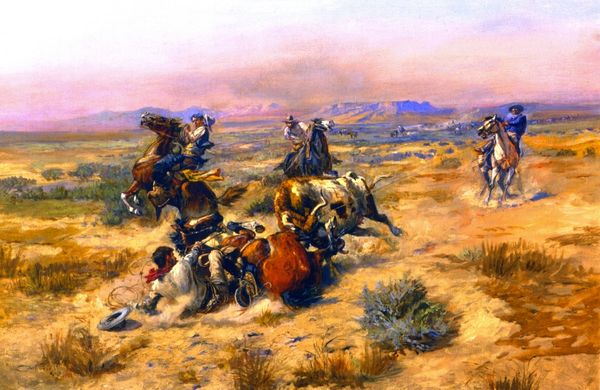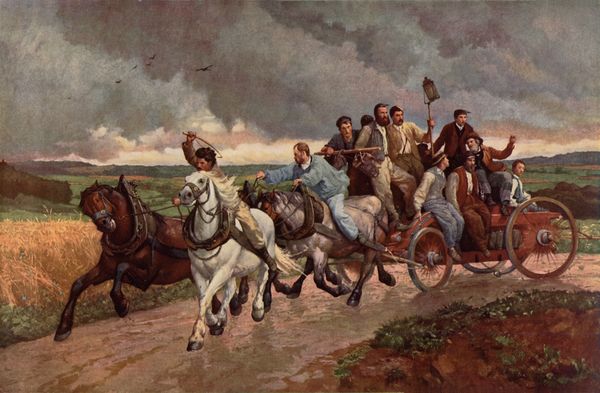
Copyright: Public domain
Curator: Oh, the morning certainly isn't going smoothly in this image! What's your initial reaction to Charles M. Russell's 1908 oil painting, "Bronc for Breakfast"? Editor: Utter chaos! My first impression is all adrenaline. The horse rearing, the cowboy struggling… it's a scene of immediate disruption against what I presume was supposed to be a quiet breakfast. Curator: The chaos does leap out. This action scene captures a pivotal narrative moment, doesn't it? Beyond the surface, however, I see layers of deeper symbolism. Horses in Western art often represented freedom and the untamed spirit, but here, the bronco is rebelling against the literal domestication represented by the "breakfast" – the settled routine of daily life and labor. It disrupts not just the food preparation but the entire established order of the camp. Editor: Absolutely. It throws a wrench in the cogs of progress. There's a social dynamic here too. This is not just about a cowboy and his horse; the background figures suggest a community disrupted. Who benefits when breakfast is upturned? Are we invited to identify with those disturbed or with the bronco and the wild spirit it embodies? Western expansion, depicted countless times in American art, isn't often captured in moments of pure absurdity. Curator: Right! Russell presents an ambivalent image, acknowledging both the taming of the West and the persistent wildness resisting that taming. You've got this clear division between the frenzied foreground action and the more settled group eating near the chuckwagon, all under this expansive Montana sky. It evokes a deep-seated tension between control and freedom, civilization and the raw power of nature. What impact might Russell's earlier work as a cowboy himself have had on how this specific historical tension is represented? Editor: Undoubtedly it informed his approach. He's not just painting cowboys, he’s portraying a life he knew intimately. "Bronc for Breakfast" reflects an insider's perspective on the vulnerabilities inherent in cowboy existence. I suspect that insider knowledge and experience might be what enabled Russell to play so subversively with myth. What resonates, beyond all the implied disruption, is an element of comic spectacle and entertainment. It suggests both danger and theater as everyday elements of that world. Curator: Very well observed! The painting serves as a potent reminder that even the most commonplace activities, like sharing breakfast, exist within a complex web of historical tensions. We’re forced to confront those uncomfortable dynamics baked into the romantic mythology. Editor: A perfect snapshot then. It underscores how the iconic imagery of the American West continues to shape, and occasionally undermine, our collective understanding of national identity.
Comments
No comments
Be the first to comment and join the conversation on the ultimate creative platform.
